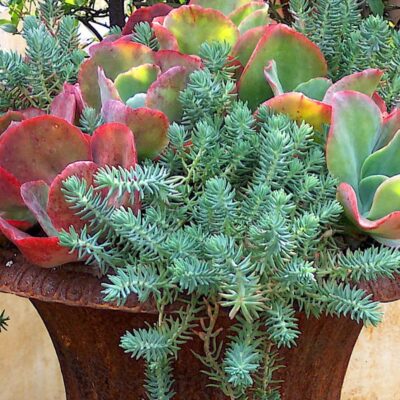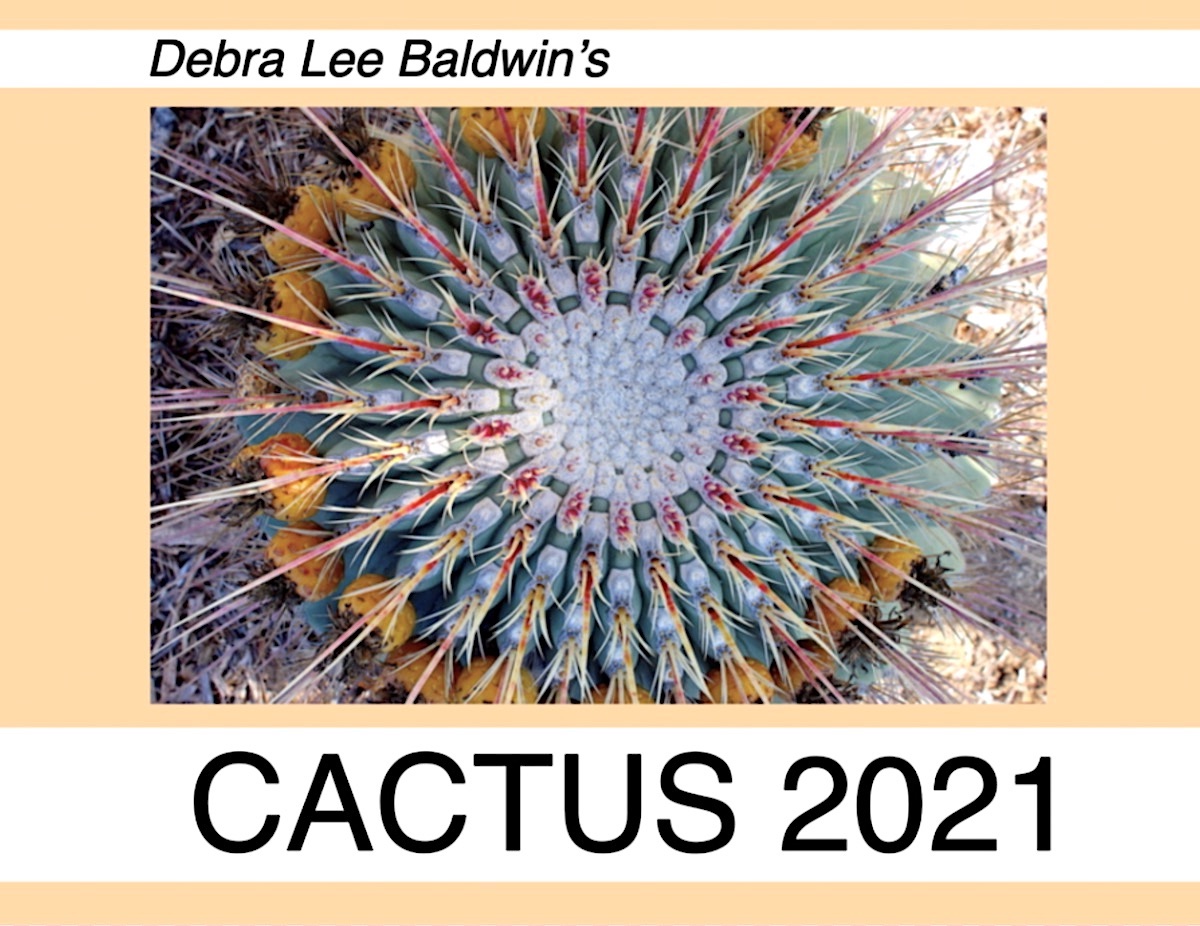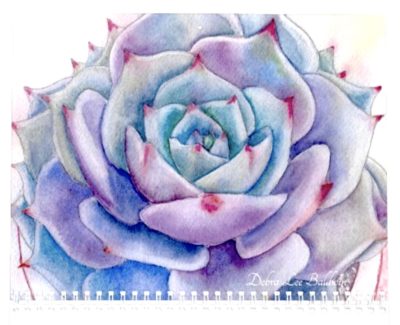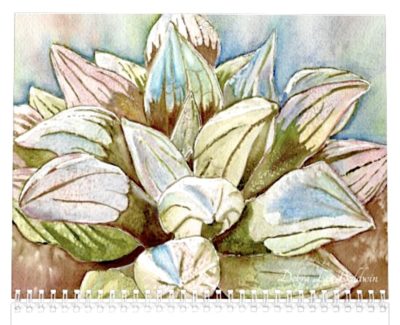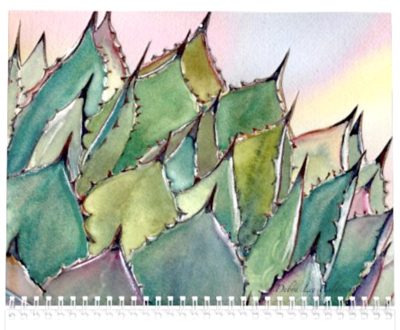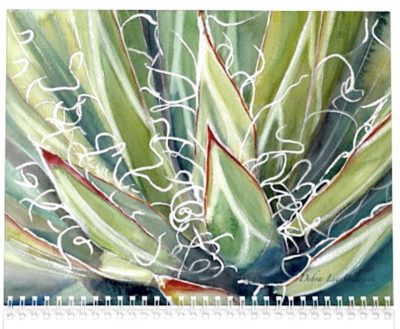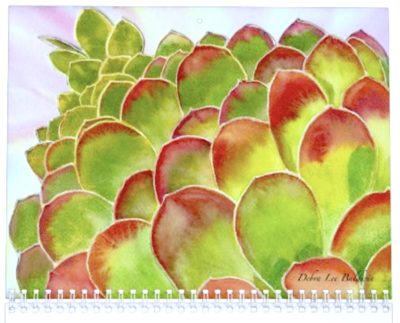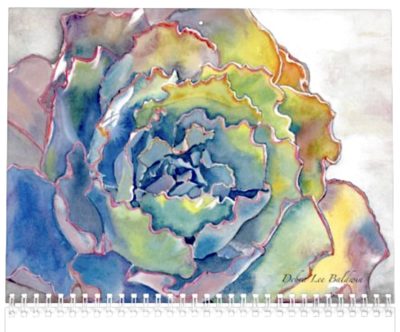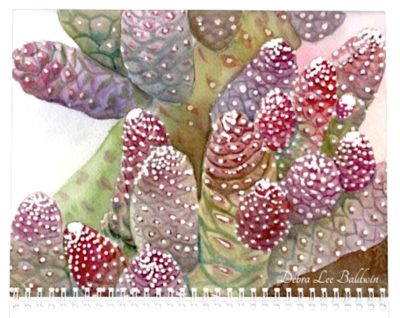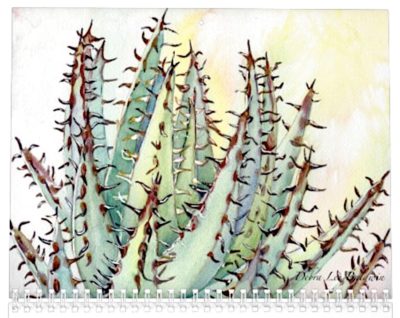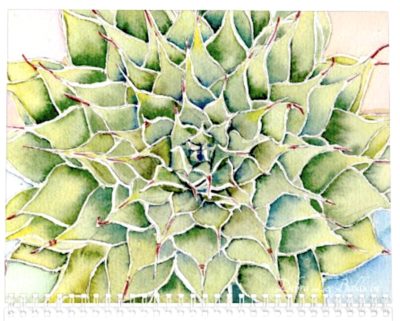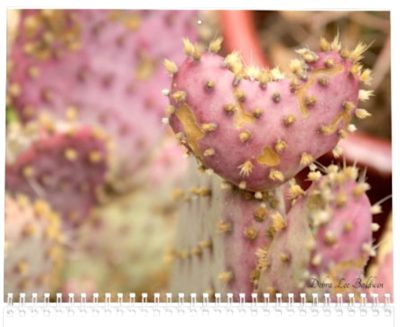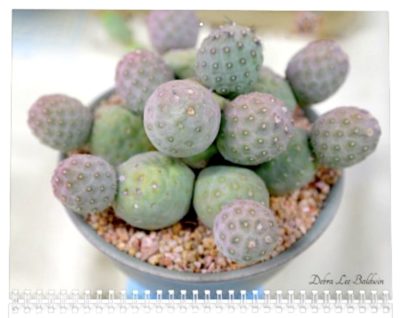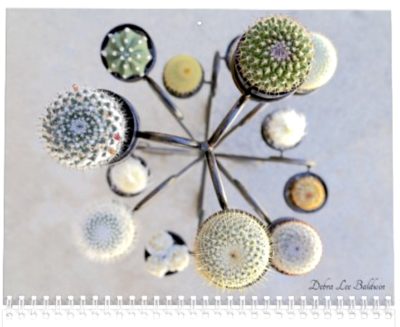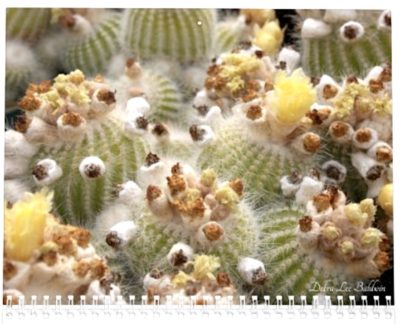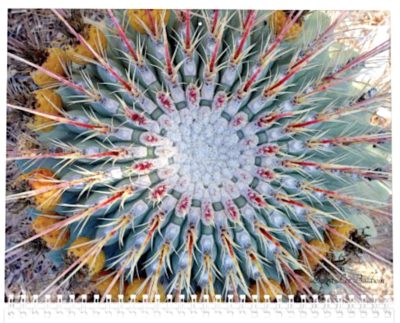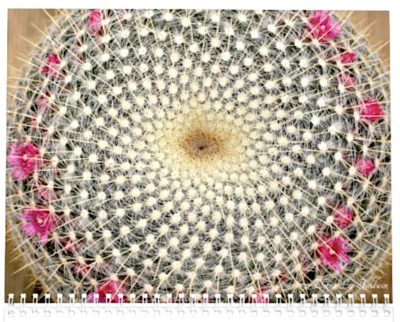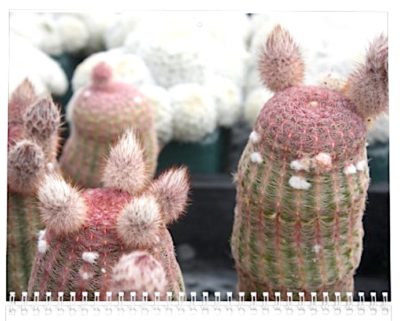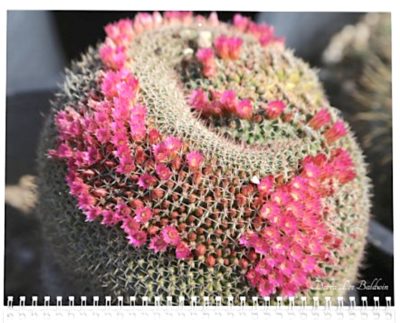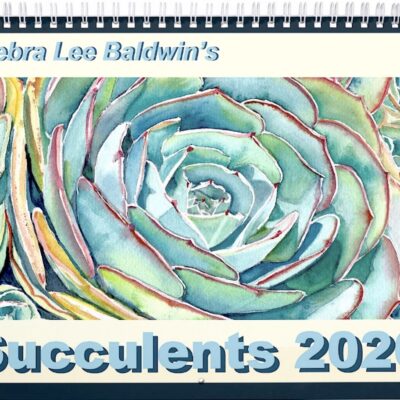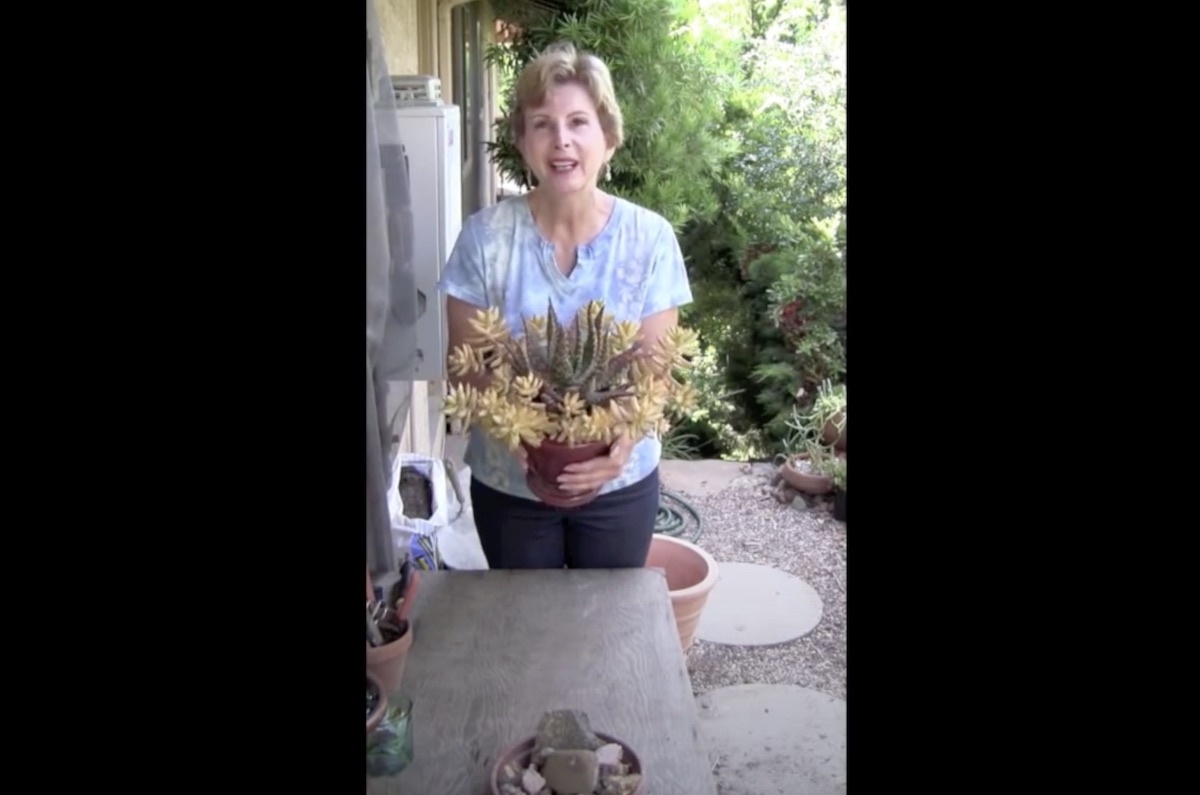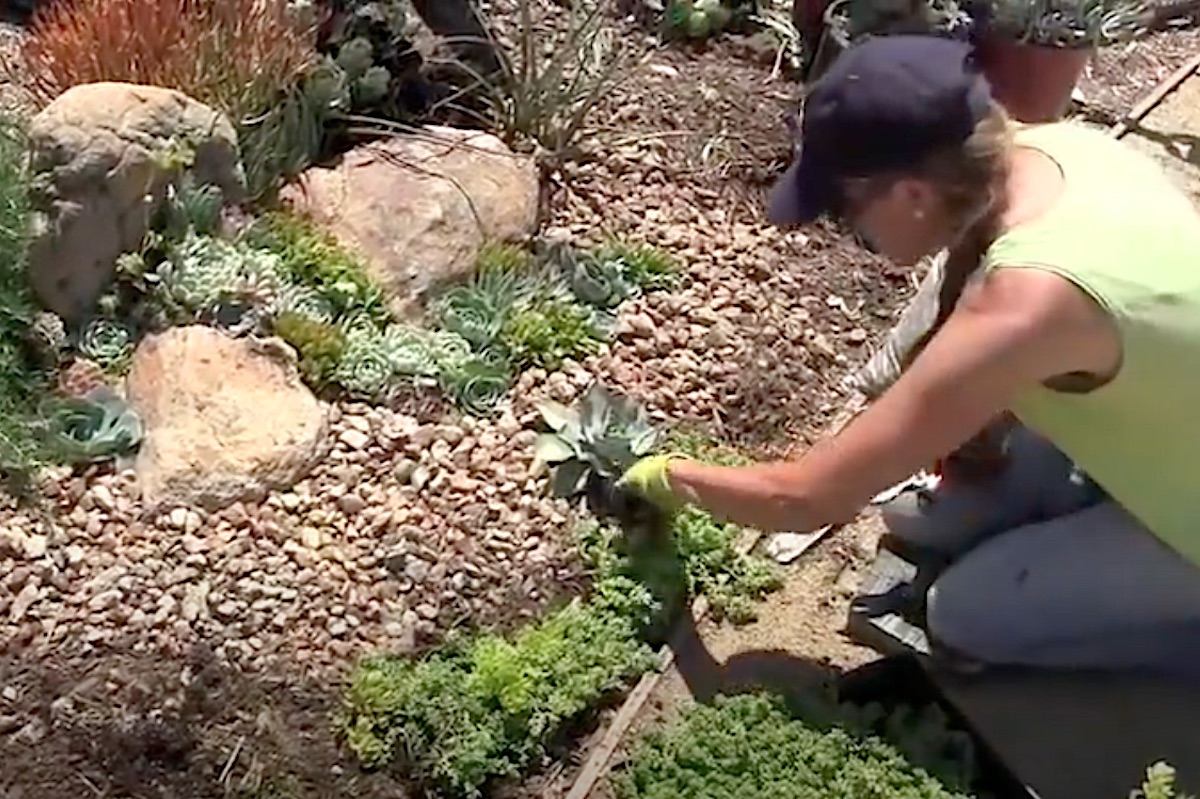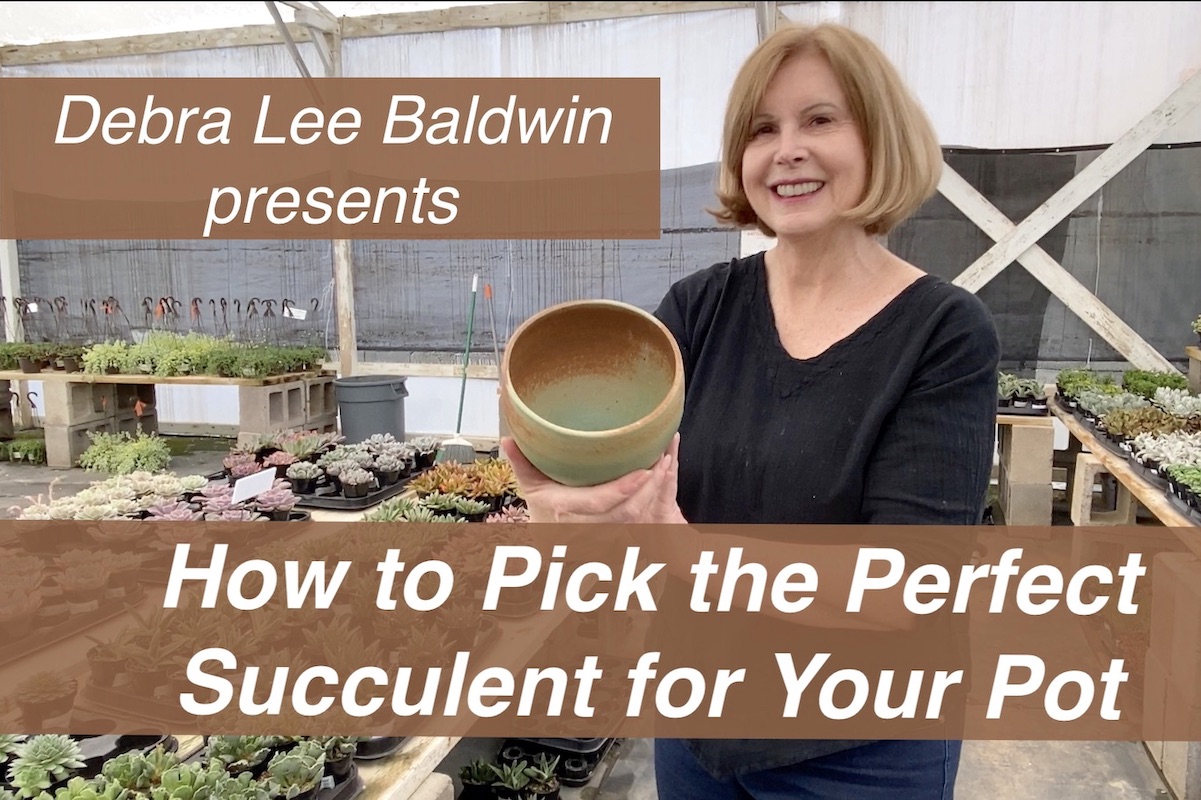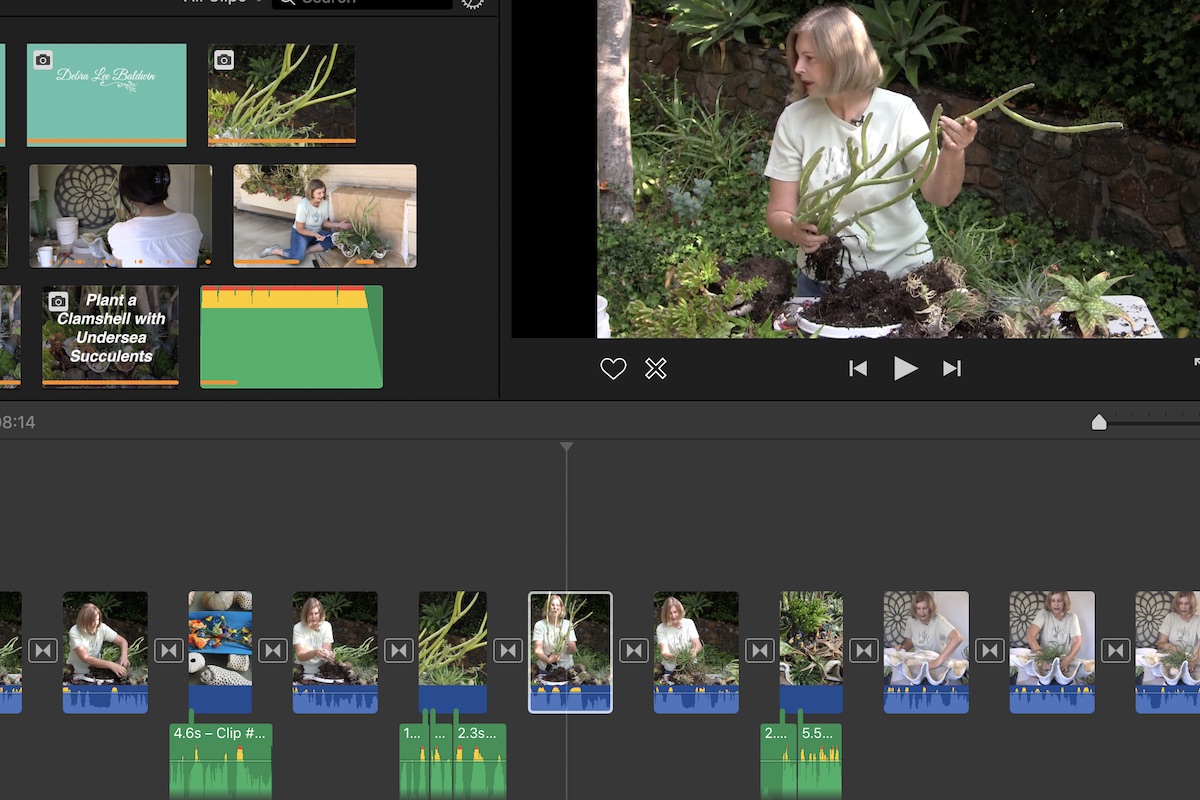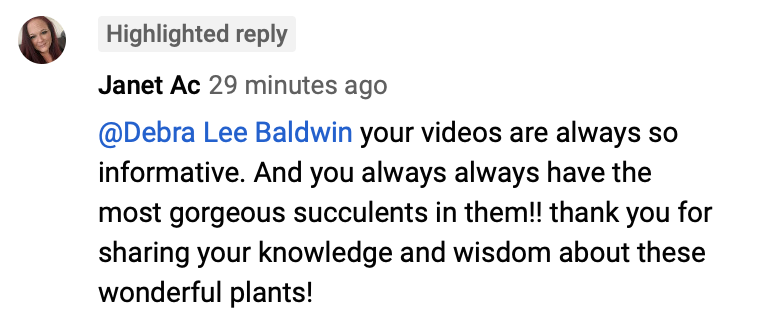In my new video, How to Group and Display Potted Succulents (9:48), I show you practical as well as aesthetic ways to display a container collection. Find the main points below.
But first, why even grow succulents in pots?

Part of my own collection of succulents in art pots
Ten reasons to grow succulents in containers
- Who can resist a great pot? Personally, I collect art pots, Talavera, frogs...
- Pots are great for succulents that, in the garden, might get engulfed or trampled.
- Containers make it easier to observe and nurture prize plants.
- Cacti and small agaves are fascinating to look at when safely framed by pots.
- Pots make it possible to pick up and carry prized succulents.
- You can move plants that can't handle summer sun but need more sun in winter (like echeverias).
- If you change residences, you can take your collection with you.
- Pots make a balcony, rooftop, deck, patio or hardscape a garden.
- You can tend your collection without having to bend or kneel.
- Family and guests enjoy looking at them.
There are probably many more (please share yours in the Comments).
The Drawback
Pots multiply. Soon you're tucking containers everywhere. Plant parents---the nurturing kind (you know who)---tend to be more concerned about where succulents will thrive than where they'll look good. But it IS possible to achieve both. In my How to Group and Display Potted Succulents video, I present three main concepts to guide and inspire you.
#1: Go High
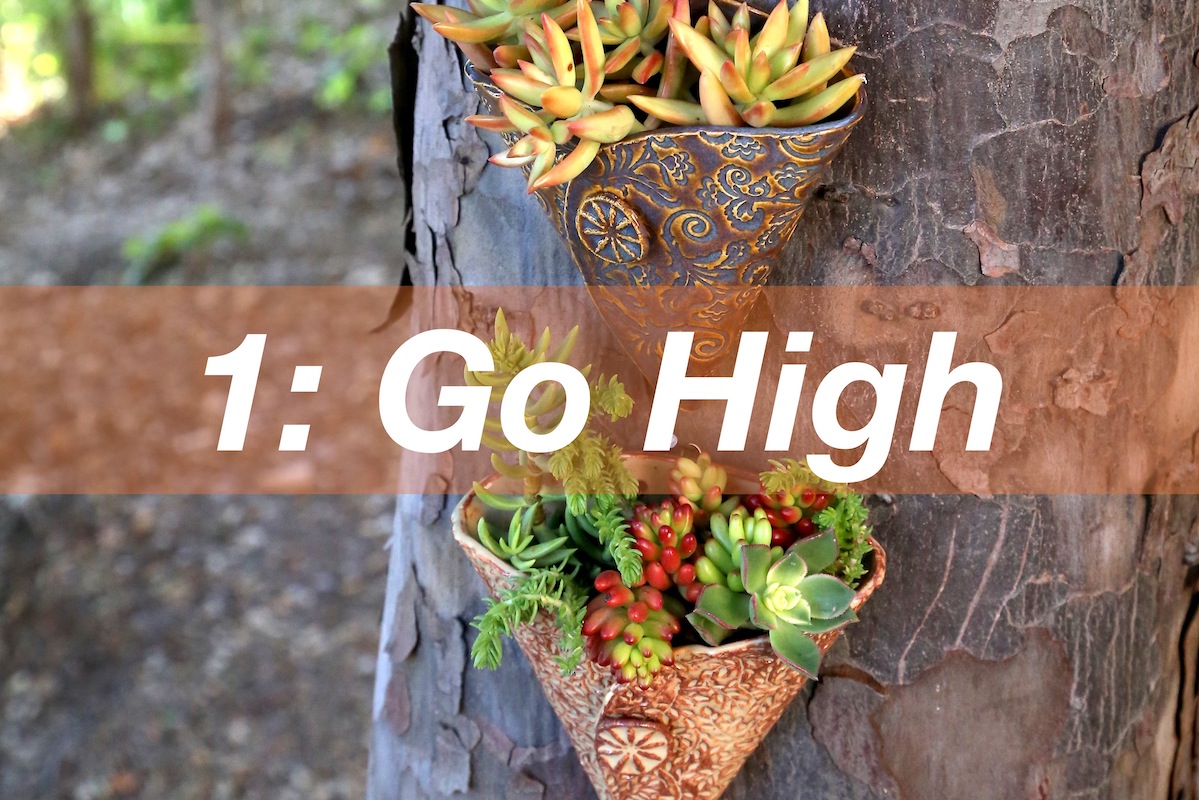
If you're going to nail pots to a tree, don't use copper or anything that rusts. (I used stainless steel.) Pots by Marsha Rafter.
Vertical space is easy to overlook, but when floor space is limited, it's a great option for displaying potted plants.
Below: I love this idea by newsletter subscriber John Yeomans of Kent, England. To display his sempervivum collection, John added screws to a small stepladder's wooden steps. He kept the screws elevated so they secure the pots through their drain holes. "I can move the whole thing as a unit," John says.

#2: Group Like with Like
Repetition adds cohesion to an assortment and makes it more pleasing to the eye. In How to Group and Display Potted Succulents, I show you windowsill succulents, a poolside succulent garden, and many others.
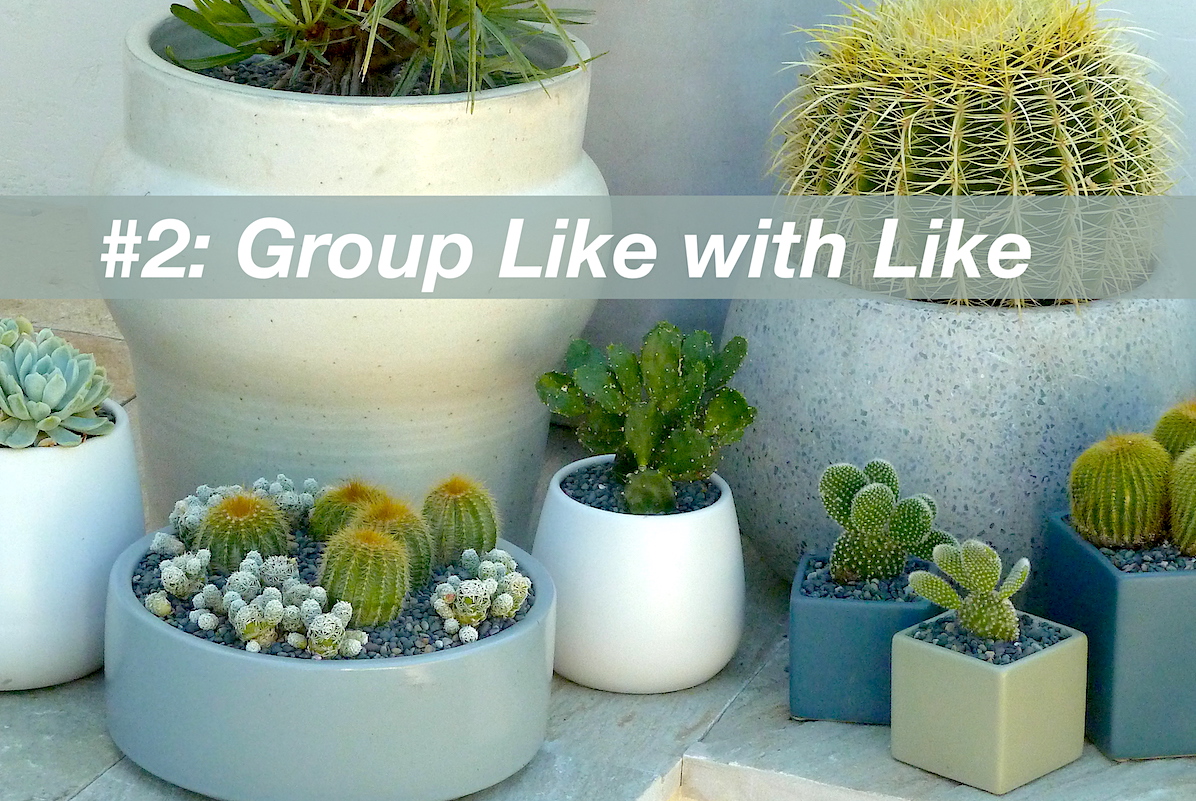
Repetitions here include the type of succulent (mostly cacti), a limited palette of glazes, and---importantly---the topdressing.
#3: Create a Display
One secret to an effective display is to have larger, taller plants in the middle or in back, surrounded by medium-sized and lastly smallest pots.
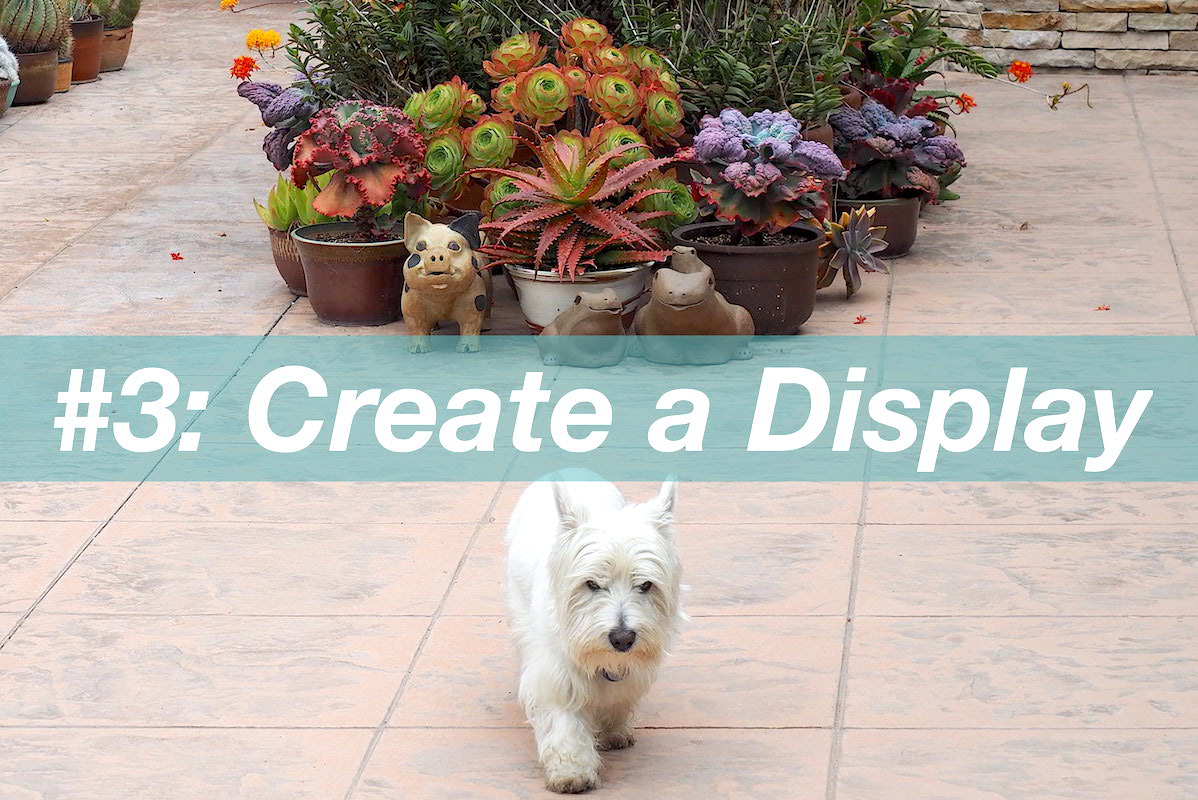
A grouping of colorful potted succulents serves as a focal point on Jim Gardner's patio.
Succulent Container Design
Succulent Container Design Design ideas and must-dos for beautiful, easy-care potted succulents Here you’ll find info on succulent container design in articles and videos. Scroll down to see what interests you and meets your needs. Also enjoy and find inspiration in my gallery of 150+ floral-style arrangements! Succulent Container Gardens, How-To Discover My Online Design…
Succulents in Containers
Succulents in Containers Design ideas and must-dos for beautiful, easy-care potted succulents Want to create a lovely, low-maintenance, low-water succulent container garden? This page guides you to helpful info on this site and on my YouTube channel. A must-have to help you select and pair pots and plants—and keep them looking good—is my my bestselling book, Succulent…
The post How to Group Potted Succulents appeared first on Debra Lee Baldwin. Copyright © Debra Lee Baldwin.
from Debra Lee Baldwin https://ift.tt/2HB3mtl
via IFTTT

